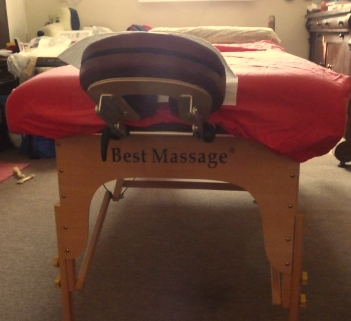

Relaxation Massage 
A relaxation massage is exactly what the name implies: a massage
strictly for the purposes of rest and relaxation. This massage
technique is not designed for therapeutic effects or for dealing with
chronic pain or discomfort.
During a session, the patient will remove most of their clothing and
lie on a massage table, usually with some sort of thin sheet draped
over the body. Usually a relaxation massage can be modified and
tailored to your specific desires. The massage takes place in a quiet,
comforting environment, with your choice of any music or candlelight in
the background.
The massage consists of the therapist applying gentle to medium
pressure of the hands to the body, gently manipulating the tissue to
promote relaxation. It is not a deep tissue massage. It is not designed
for working the deeper muscles of the body, but just a gentle kneading
and rubbing of the outer layers of the body tissue. It will cover a
wide range of areas on the body including the back, legs, arms and neck.
Sometimes there is the option of adding some aromatherapy treatment to
your massage therapy. High quality aromatherapy oils can heighten the
holistic experience of the massage and allow for greater relaxation and
restoration of one’s energy balance. Of course, unscented oil
is
also an option. The oil produces a more slippery surface for the
therapist to work on, so there is no pulling of the skin. During the
massage, the patient can remain quiet and simply explore their own
personal thoughts in their head, or they can chat with the therapist if
so desired. The session can be personalized to be exactly how you like
it.
Many live their stressful lives day to day without taking any time off
just for them. Everyone deserves a well needed moment of relaxation and
this massage is just the right technique for that. It will relax your
mind and body, giving you a break from the stress of your life. The
length of the massage will depend on how long you would like it to
last. Typically the option is between half an hour and two hours in
length. Massages are open to people of all ages, and some places even
often couples massage, where the couple is massaged in the same room
allowing them to share the experience together.
Relaxation massage is a smooth, gentle style of massage designed to
improve circulation, range of movement, relief minor muscle pain, and
promote overall relaxation. Most people don’t take enough
time
off for themselves anymore. It’s about time you’ve
pampered
yourself with a relaxation massage!
Deep
Connective Tissue Massage
Deep connective tissue massage is a form of intense massage that aims
to release myofascial (connective tissue) restrictions in the body, and
to break up any restrictive scar tissue. It has also been known to help
relieve chronic tension, to increase the bodys range of motion, to
improve posture and to enhance the natural harmony of the entire body
and mind.
Deep connective tissue massage is also said to restore the length and
flexibility to the fascia (the fiberous tissue that surrounds the
muscles and organs), by normalizing the tissue and by improving the
strength and overall health of the entire fascial system (connective
tissues throughout the entire body).
Deep connective tissue massage borrows many of its techniques from
traditional Swedish massage. However the pressure that a massage
therapist applies during a deep connective tissue massage is more
intense, and massage oil or lotion isnt typically used.
The strokes of this type of massage are slower and more pressure is
applied in order warm the muscle tissue and reach the deeper layers of
muscle. Although having a deep connective tissue massage shouldnt cause
you any pain, its often less relaxing and less comfortable then a
traditional Swedish massage. Most practitioners ask that their clients
tell them immediately if the stroke pressure is too intense.
During a session, the massage therapist will focus on releasing tension
from the deeper tissue structures of the muscle and fascia (or
connective tissues) with deep, intense strokes. When a therapist
locates a chronic knot (also referred to as an adhesion), they will
often recommend that a client adapt a total lifestyle change - which
may include exercises to help improve posture, balance, movement, and
relaxation. These steps are complementary to your weekly deep
connective tissue massage sessions. usally 60-90 minutes
I am currently in school and will be massaging people when i
can....Michael Pinchak ...216-233-5265




